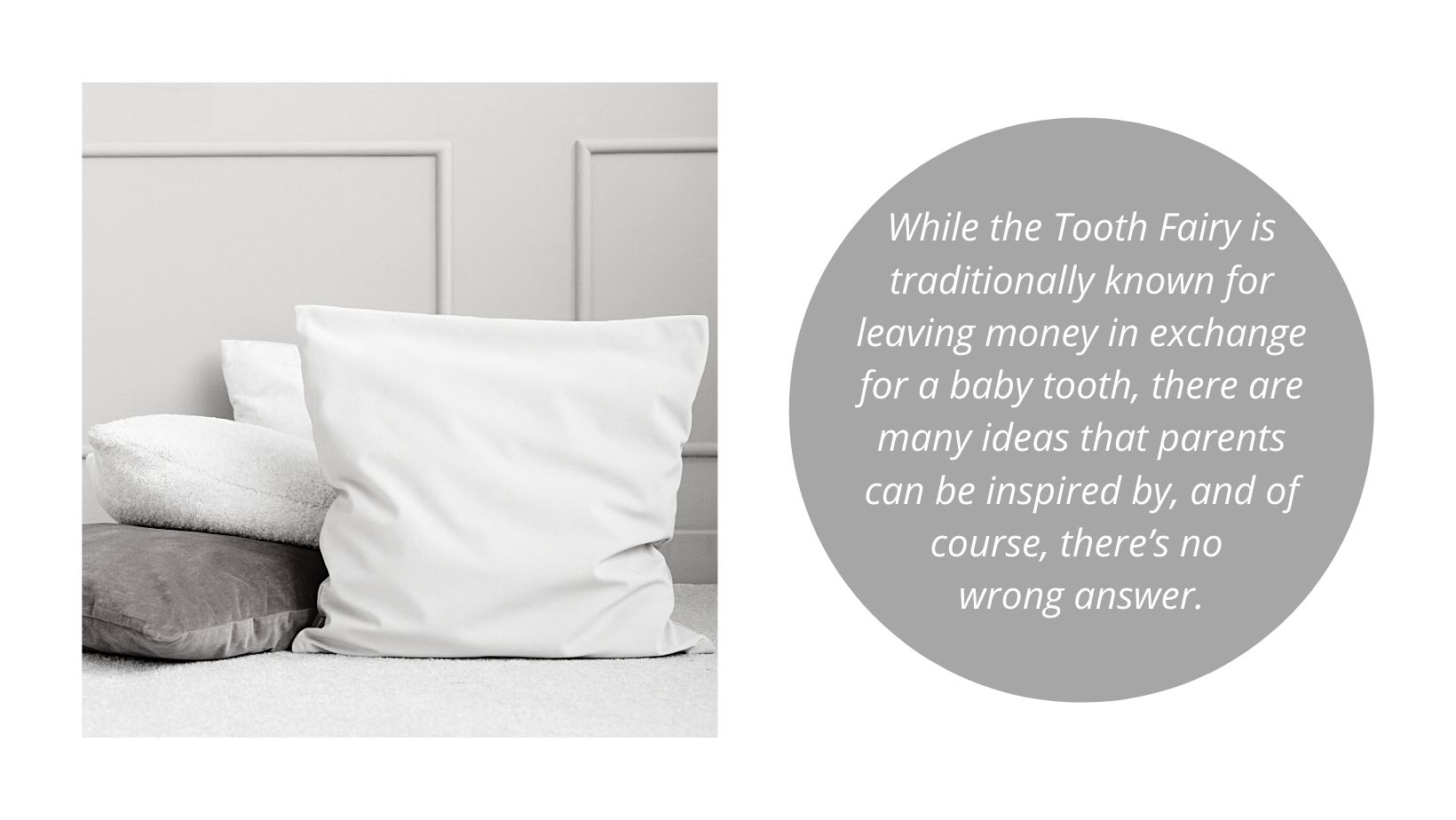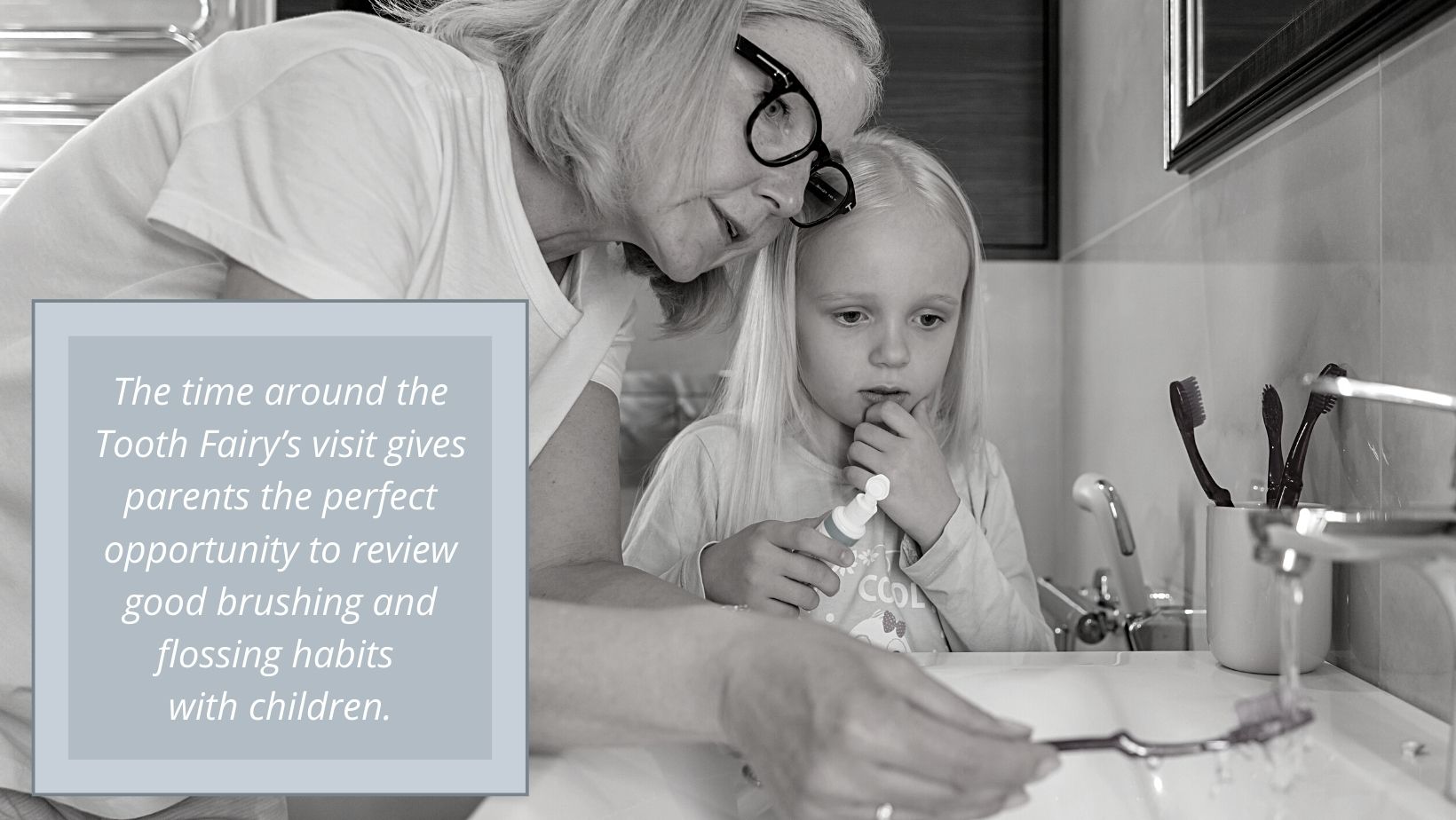A visit from the Tooth Fairy is a fun way for children and parents to celebrate the milestone of losing a baby tooth. But with the tooth in hand, parents might be left to wonder: How does the Tooth Fairy make the experience magical and memorable?
The Tooth Fairy replaces each tooth under a child’s pillow with the traditional coin or dollar bill—or something more creative. And because losing a tooth is a rite of passage in the transition from “little kid” to “big kid,” it also offers a great opportunity to talk with children about their teeth and good dental health habits. Those baby teeth are being replaced with permanent teeth that have to last a lifetime.
When Does a Child Lose the First Tooth?
Typically, the first baby tooth is lost around the age of five or six. Though losing baby teeth is usually pain-free, it can be a frightening experience for some kids. The promise of a visit from the Tooth Fairy can add a little excitement during this time and quell some of the anxiety around losing a tooth.
Tooth Fairy Gifts
While the Tooth Fairy is traditionally known for leaving money in exchange for a baby tooth, there are many ideas that parents can be inspired by, and of course, there’s no wrong answer. Just a few popular options include:
- A few coins or a dollar bill
- A pack of sugar-free gum
- A small toy
- A coupon for a fun experience, such as a trip to a museum or park
- A new toothbrush with the child’s favorite cartoon character
- A book about good dental habits—this is a great, on-theme opportunity to learn about good dental hygiene from the Tooth Fairy, who happens to be an expert.

A caregiver might also leave the child a note from the Tooth Fairy. This could be a purely fun message or offer some encouragement about good dental care. Examples include:
- Reassurance that losing teeth is a normal part of growing up that can be fun
- A thank-you for taking good care of the baby tooth for the Tooth Fairy
- A reminder to brush and floss well, especially as new adult teeth come in
- A thank-you to siblings that set a good example with their brushing and flossing
A No-Fail Guide to Being the Tooth Fairy
The first rule of being the Tooth Fairy is to have fun! That said, there are a few tips and tricks that can help make this nighttime ritual a success.
Use a Tooth Fairy pillow or box. Baby teeth are tiny; it may be difficult for the parent or caregiver to locate the small tooth under the child’s pillow. A special Tooth Fairy box or pillow with a pocket for the tooth is a great way to make the process special—and make the tooth easier to find in a dark bedroom in the middle of the night. Really, any container that holds the tooth and makes it easier to find can be designated for the Tooth Fairy. Kids can even create and decorate their own Tooth Fairy box.
Set an alarm. So many parents can relate to forgetting to retrieve a lost tooth…and waking up to a confused, upset child. Setting an alarm for a time between the child’s and the adult’s bedtimes is a good way to remember to fulfill Tooth Fairy duties.
Keep it simple. Remember, with 20 primary teeth in a child’s mouth, this Tooth Fairy ritual will be repeated many times between the ages of about six and 12. An elaborate process or expensive gift might be difficult to replicate over and over throughout the years.
Give the tooth a once-over. Before tossing it, take some time to examine the tooth. The lost tooth gives caregivers a great chance to get a close up look at the child’s baby tooth and examine it for signs of cavities such as white or brown spots or visible pits. Signs of cavities could indicate that other teeth might need attention.
Talk about good dental habits. The time around the Tooth Fairy’s visit gives parents the perfect opportunity to review good brushing and flossing habits with children. It’s also a good reminder to schedule a dental visit if there isn’t one already on the books.

When Should a Child See the Dentist?
Though it’s never too late for a child to see the dentist, most experts recommend the first dental visit happens soon after the child’s first tooth erupts. During this first visit the child gets to know the dental team and is screened for any signs of gum or tooth decay, as well as proper development.
At subsequent visits, the child will receive a professional dental cleaning and check-up. The dentist will start by examining the child’s teeth to monitor development. This includes making sure adult teeth are coming in correctly and looking for any signs of teeth grinding.
The dentist will also check for tooth decay. It’s important to detect and treat cavities on baby teeth as well as permanent teeth. Decay can also be found between the teeth, so the dentist may also use x-rays to screen for cavities. Dental x-rays for children are typically recommended starting at age 4 to 6.
Starting around the same time as the first lost tooth, many dentists recommend sealants to help protect molars from decay. Sealants coat the biting surface of back teeth with a resin. The resin dries and hardens, forming a smooth barrier that keeps out the acids and bacteria that cause cavities.
If a child has not been to the dentist yet, or if it’s been longer than six months since the last dental cleaning, the milestone of a lost tooth is a good reminder. The timing of the Tooth Fairy’s visit is the perfect opportunity to schedule the first appointment with a local dentist.
Make Your Own Tooth Fairy Traditions
No matter how families choose to adopt the tradition, the Tooth Fairy continues to bring joy and magic to growing children – while helping to reinforce a lifetime of good dental health habits.


